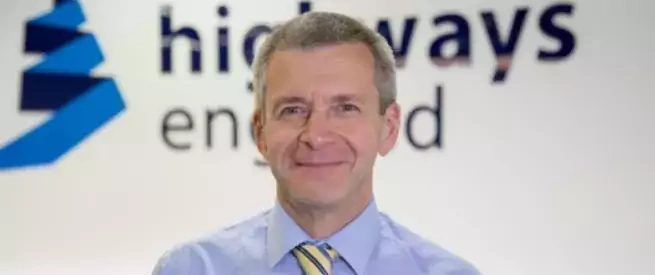Big interview: Malcolm Wilkinson

Malcolm Wilkinson, Head of Connected and Automated Vehicles (CAV) and Energy at National Highways, talks intelligent infrastructure, freight platooning and hands-free zones.
MotorPro: National Highways has completed several major CAV studies recently – what are the most significant findings?
Malcolm Wilkinson: “Our connected corridor project on the A2/M2 was very successful, certainly an important steppingstone. It was a joint project with Kent County Council (KCC), Transport for London (TfL), the Department for Transport (DfT) and others. We demonstrated that cellular and WiFi connectivity can be used to put highway information into vehicles, for example, signage, warnings and green lights. We also demonstrated that data can transfer the other way – to us from vehicles. The project informed our Digital Roads vision and Connected Services roadmap, influencing elements of our Digital for Customer programme.
“The Connected and Autonomous Vehicles: Infrastructure Appraisal Readiness (CAVIAR) project [hat tip for the acronym] used both simulations and real-world data collection. The number one recommendation was the need for further study to determine how CAVs can best navigate roadworks – that’s the next step. This potentially includes infrastructure-based solutions, such as smart traffic cones, and OEMs developing ‘cautious’ behaviours, to be triggered once a CAV enters a work zone.
“The HelmUK freight platooning trial we led, working closely with the DfT, was another really valuable exercise. We demonstrated real-world use of platooning on the M5/M6. Although the fuel savings didn’t replicate what we were seeing on the test tracks, this was largely due to the need to break up the platoon at many of the junctions. It is one of those technologies you can see working brilliantly on long outback roads in Australia, but the advantages of putting it into every cab in the UK are far less obvious. It is important we recognise the challenges and learn from initiatives like the ENSEMBLE multi-brand truck platooning project in Europe.”
What are the most pressing CAV issues facing National Highways?
“My feeling is that car manufacturers aren't going to want to develop completely different models for the UK market, so we need to understand our role as a highway authority. What do we need to think about in terms of highway designs, information provision and maintenance standards?
“There’s been a lot of talk about the need for the white lines to be readable by automated vehicles. Is that still the case? If so, what does that mean for our maintenance schedules? Can we use the data from vehicles to inform our congestion management? Is there data we can use for asset management purposes?
“Particularly over the next few years, with a mixed fleet with different levels of autonomy, that’s going to present new scenarios, new risks. As a highway authority we need to be conscious of those – how they’re going to affect our operations and the safety of the travelling public.”
How did you identify which parts of the network could be hands-free ‘Blue Zones’?
“The Centre for Connected and Autonomous Vehicles (CCAV) and the Vehicle Certification Agency (VCA) led the discussions with Ford regarding authorisation of their technology on public roads. Although we liaise closely with both, we weren’t involved in the detailed discussions with Ford, but to be clear, BlueCruise is an advanced driver assistance system, so the driver has to remain alert and able to take back control.
“Going forward, we need to move closer to organisations developing these systems to understand when they are coming to market and in what numbers. That’s part of our role as a highway authority – to keep our customers safe and to inform our traffic officers, so everyone knows what to do in the event of an incident.
“We're reaching out to Ford, to see what data they can they share with us and to develop a more collaborative relationship. It's very exciting times. We want people to embrace CAV technology and enjoy the benefits.”




